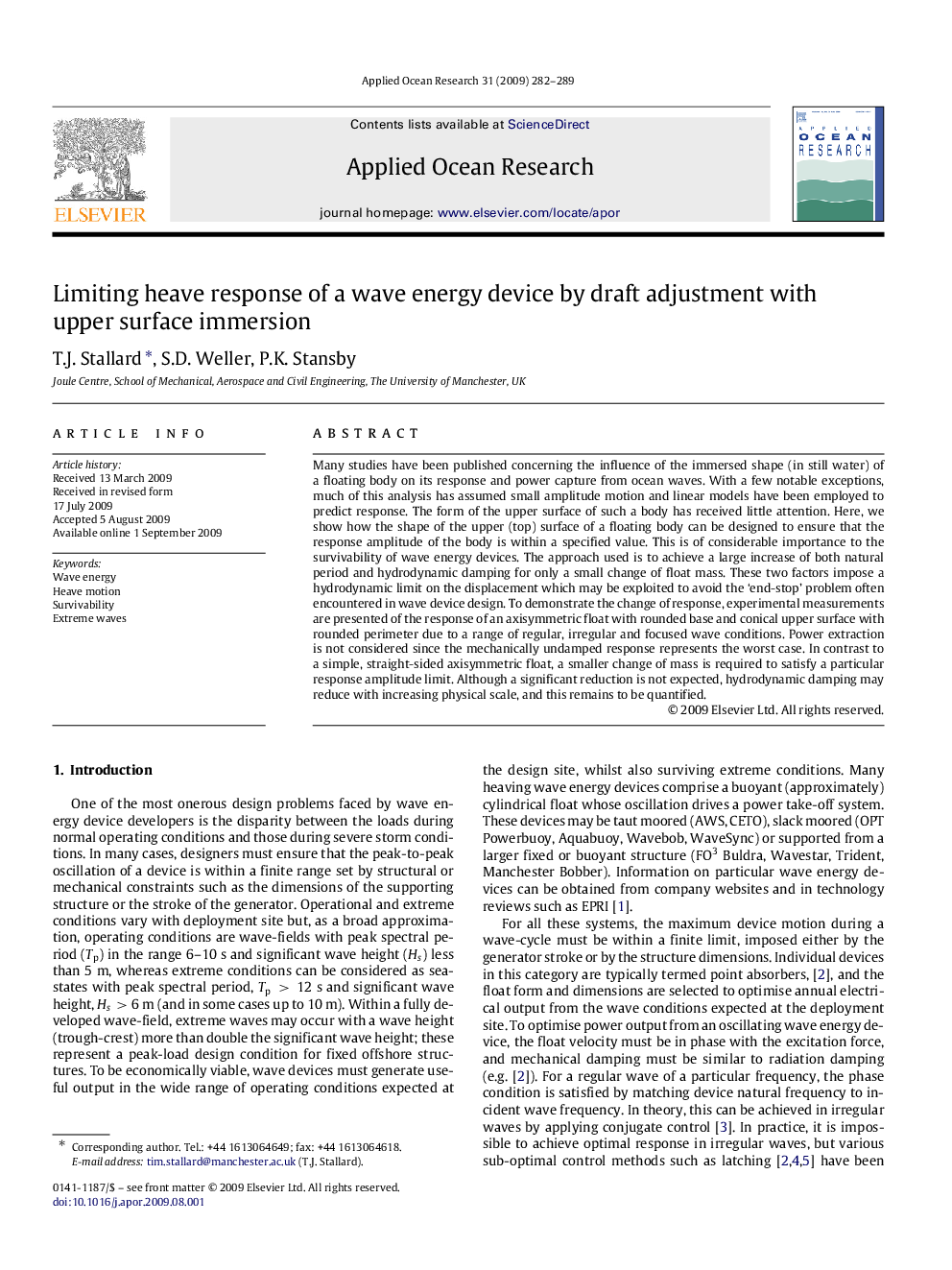| کد مقاله | کد نشریه | سال انتشار | مقاله انگلیسی | نسخه تمام متن |
|---|---|---|---|---|
| 1720354 | 1014249 | 2009 | 8 صفحه PDF | دانلود رایگان |

Many studies have been published concerning the influence of the immersed shape (in still water) of a floating body on its response and power capture from ocean waves. With a few notable exceptions, much of this analysis has assumed small amplitude motion and linear models have been employed to predict response. The form of the upper surface of such a body has received little attention. Here, we show how the shape of the upper (top) surface of a floating body can be designed to ensure that the response amplitude of the body is within a specified value. This is of considerable importance to the survivability of wave energy devices. The approach used is to achieve a large increase of both natural period and hydrodynamic damping for only a small change of float mass. These two factors impose a hydrodynamic limit on the displacement which may be exploited to avoid the ‘end-stop’ problem often encountered in wave device design. To demonstrate the change of response, experimental measurements are presented of the response of an axisymmetric float with rounded base and conical upper surface with rounded perimeter due to a range of regular, irregular and focused wave conditions. Power extraction is not considered since the mechanically undamped response represents the worst case. In contrast to a simple, straight-sided axisymmetric float, a smaller change of mass is required to satisfy a particular response amplitude limit. Although a significant reduction is not expected, hydrodynamic damping may reduce with increasing physical scale, and this remains to be quantified.
Journal: Applied Ocean Research - Volume 31, Issue 4, October 2009, Pages 282–289